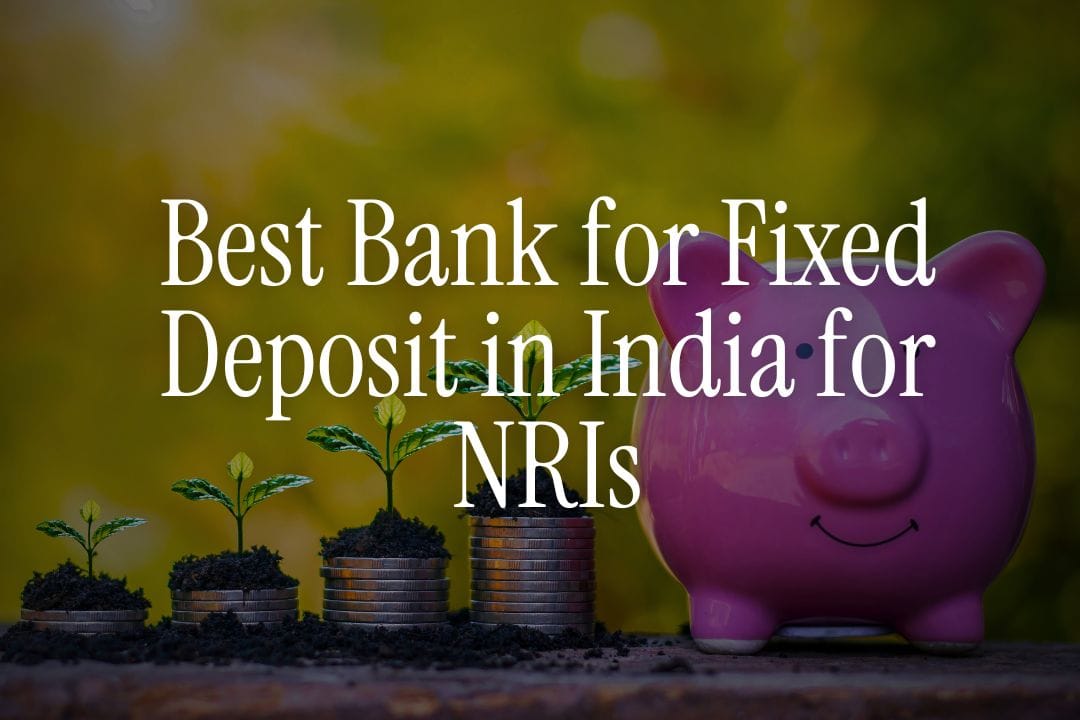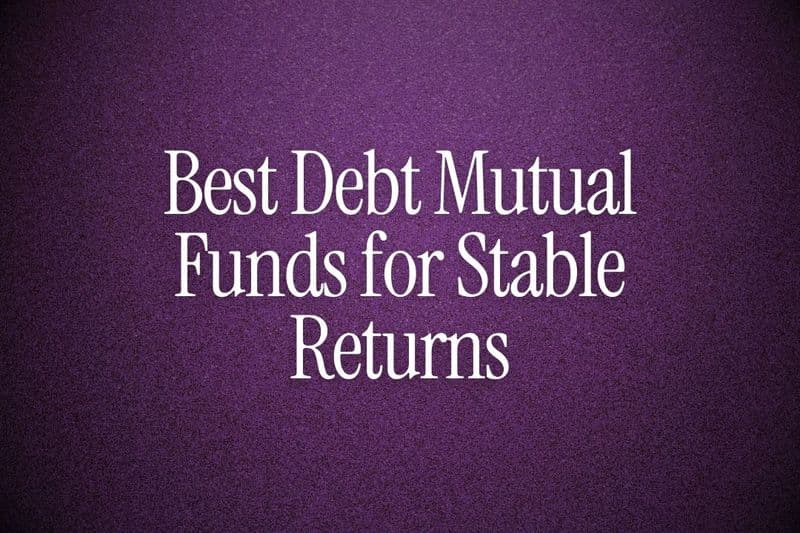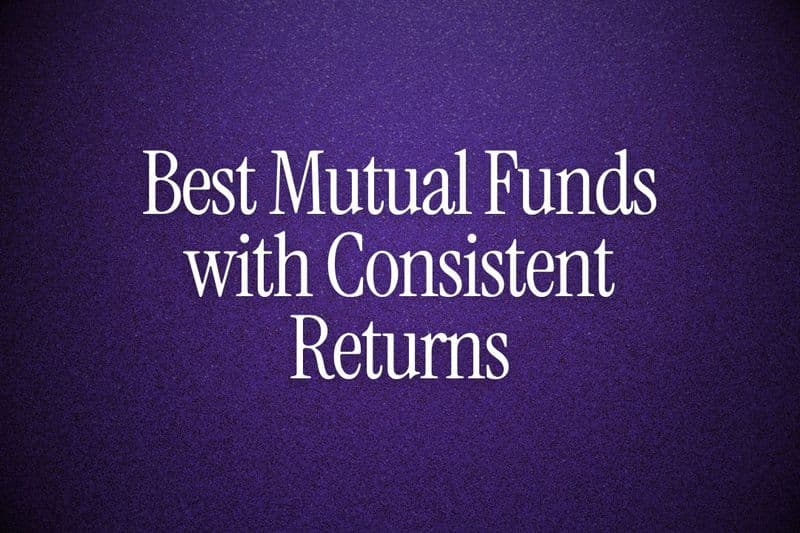
You’ve probably seen that WhatsApp forward: "Small finance banks offering 8.5% FD rates! Better than ICICI/HDFC!"
Your cousin loves DCB Bank, your colleague sticks with HDFC, and a Reddit thread calls Equitas a hidden gem.
Meanwhile, your father-in-law insists on SBI, like always.
After 12 years at Belong helping NRIs, we have learned there’s no one "best" bank for fixed deposits. It depends on what you value - higher rates, brand trust, online ease, or tax benefits.
This guide covers the best NRI FD rates, NRE/NRO/FCNR differences, DICGC safety, taxes, penalties, and why GIFT City deposits might beat traditional FDs.
From Dubai to New York, you’ll find the right option for you.
Why There's No Single "Best" Bank for Everyone
Let me be direct: anyone telling you "Bank X is the best for NRI FDs" is oversimplifying.
Your "best bank" depends on five things:
1. What type of FD you need: NRE, NRO, or FCNR? Each has different tax treatment, repatriation rules, and interest rates.
2. Your repatriation plan: Planning to move money back to Dubai? You need full repatriation (NRE) or you'll hit the USD 1 million annual limit (NRO).
Also Read -How to Repatriate Funds from NRO/NRE Accounts
3. Risk tolerance: Are you okay with a small finance bank offering 8% but less brand recognition, or do you sleep better with SBI's name even at 6.5%?
4. Tenure: Rates vary wildly by tenure. A bank offering 7.5% for 888 days might offer only 6% for 1 year.
5. Online access: If you're in the UAE and need to open/manage everything online, some banks make it easy. Others require you to visit a branch in India or courier documents.
So instead of declaring one winner, I'll show you which banks excel in which scenarios. You pick based on your priorities.
Also Read -How to Repatriate Funds from an NRI Account to Abroad
Understanding NRE vs NRO vs FCNR Fixed Deposits
Before comparing banks, you need to understand which type of FD suits you. This is the most common mistake NRIs make - opening the wrong account type.
NRE Fixed Deposit (Non-Resident External)
What it is: You transfer foreign currency (USD, AED, GBP) to India. It's converted to INR and deposited as an FD.
Tax: Interest is completely tax-free in India. No TDS deducted.
Repatriation: Both principal and interest are fully repatriable without any limit. You can transfer everything back to your foreign account anytime.
Minimum tenure: 1 year
Best for: NRIs who want to bring foreign earnings to India, earn tax-free interest, and have full freedom to repatriate later.
(Source: ICICI Bank, HDFC Bank, State Bank of India, Federal Bank)
NRO Fixed Deposit (Non-Resident Ordinary)
What it is: You deposit income earned in India (rent, dividends, pension) or existing INR savings.
Tax: Interest is taxable at 30% (plus surcharge and cess). TDS is deducted automatically.
Repatriation: Principal and interest can be repatriated up to USD 1 million per financial year after paying applicable taxes and submitting documentation (Form 15CA/CB).
Minimum tenure: 7 days
Best for: NRIs with Indian-sourced income who don't need to repatriate large amounts abroad.
Bank | NRE FD Rate | NRO FD Rate | FCNR USD Rate | Digital Opening |
|---|---|---|---|---|
IDFC FIRST | 7.3% p.a. | 7.3% p.a. | ~4.75% % p.a. | Yes |
ICICI Bank | 7.3% p.a. | 7.3% p.a. | 4.85% p.a. | Yes |
HDFC Bank | 6.50% p.a. | 6.50% p.a. | 4.00% p.a. | Partial |
Axis Bank | 7.25% p.a. | 7.250% p.a. | ~4.90% p.a. | Yes |
SBI | 7.50% p.a. | 7.50% p.a. | ~4.5% p.a. | Limited |
Also Read - Best NRI Fixed Deposit Accounts India Complete Tax & Rate Guide
FCNR Fixed Deposit (Foreign Currency Non-Resident)
What it is: You deposit funds in foreign currency (USD, GBP, EUR, AED, etc.). The FD is maintained in that currency - no conversion to INR.
Tax: Interest is tax-free in India. No TDS.
Repatriation: Fully repatriable - principal and interest, no limit.
Currency risk: Eliminated. If the rupee depreciates, your FCNR deposit's value in foreign currency remains stable.
Tenure: 1 to 5 years
Interest rates: Much lower than NRE/NRO because you're not taking on currency risk. Typically 2-4% for USD, slightly higher for GBP/EUR.
Best for: NRIs who want zero currency risk and plan to use the money in foreign currency later (kids' education abroad, retirement in the US, etc.).
(Source: RBI FEMA)
Feature | NRE FD | NRO FD | FCNR FD |
|---|---|---|---|
Currency | INR (converted from foreign currency) | INR | Foreign currency (USD, GBP, EUR, etc.) |
Tax | Tax-free | 30% TDS on interest | Tax-free |
Repatriation | Fully repatriable, no limit | USD 1 million/year | Fully repatriable, no limit |
Tenure | 1-10 years | 7 days - 10 years | 1-5 years |
Interest Rate | 6.5% - 7.5% | 3.5% - 7.5% | 2% - 4% (depending on currency) |
Currency Risk | Yes (INR depreciation affects value) | Yes | No |
Best for | Foreign earnings, tax-free returns | Indian income, short-term parking | Currency stability, long-term planning |
👉 Tip: Most NRIs in the UAE should start with an NRE FD. It's tax-free, fully repatriable, and offers decent returns. Use NRO only if you have Indian income that must stay in India. Use FCNR if you're extremely risk-averse about currency fluctuation.
Top Banks for NRI Fixed Deposits
Here's a brutally honest comparison of major banks based on current NRE FD rates, safety, and online convenience.
Bank | Best NRE Rate | Tenure | Premature Withdrawal Penalty | Online Opening from UAE | DICGC Insured | My Take |
|---|---|---|---|---|---|---|
6.85% | 1-2 years | 1% | Yes | Yes | Highest rates among major private banks. Good digital platform. | |
6.25% to 6.60% | Select tenures (444 days) | Varies | Yes | Yes | Most trusted name. Branch network everywhere. Rates decent but not highest. | |
ICICI Bank | 6.5% - 7.3% | 1-3 years | No interest if withdrawn before 1 year | Yes | Yes | Excellent online banking. Lower rates, but ultra-convenient. |
HDFC Bank | 6.5% - 6.9% | 1-3 years | Penalty applicable | Yes | Yes | Strong digital experience. Rates competitive but not market-leading. |
Axis Bank | 6.5% - 7.0% | 1-3 years | Varies | Yes | Yes | Solid middle ground. Good mobile app, decent rates. |
7.25% - 7.5% | Select tenures | 1% | Yes | Yes | Small finance bank. Higher rates, less brand recognition. | |
Equitas SFB | 7.25% - 7.4% | 888 days | 1% after 6 months | Yes | Yes | Small finance bank. Competitive rates, DICGC insured but smaller. |
(Source: Bank websites as of October 2025 - rates are subject to change)
Also Read -Indian Overseas Bank FD Rates - Safe to Invest?
Also Read -LIC Housing Finance FD Rates 2025
Key Observations:
Small finance banks (DCB, Equitas, AU, Ujjivan) typically offer 0.5-1% higher rates than large private banks. But they come with less brand recognition and smaller branch networks.
Public sector banks (SBI, BOI) offer trust and stability, but rates are usually 0.25-0.5% lower than top private banks.
Large private banks (ICICI, HDFC, Axis) offer the best online experience for NRIs but rates are middle-of-the-pack.
👉 Tip: If you're parking ₹50 lakh+ and need peace of mind, go with SBI, ICICI, or HDFC. If you want maximum returns and are okay with less-known names, Federal Bank or DCB Bank offer 0.5-0.75% more.
Also Read -Union Bank of India FD Rates
Small Finance Banks: Worth the Extra 0.5-1% Interest?
Small Finance Banks (SFBs) consistently offer higher FD rates - sometimes 7.5-8.5% compared to 6.5-7% at large banks.
The question NRIs always ask me: "Are they safe?"
What Are Small Finance Banks?
SFBs were created by RBI in 2015 to provide banking services to underserved sections. They must lend at least 75% of their loans to priority sectors (small businesses, agriculture, MSMEs).
Examples: AU Small Finance Bank, Equitas, Ujjivan, Utkarsh, Jana, ESAF, Suryoday.
Are They Safe?
Yes, they're regulated by RBI just like large banks. They must maintain the same capital adequacy ratios, follow the same banking norms, and deposits are insured by DICGC (Deposit Insurance and Credit Guarantee Corporation) up to ₹5 lakh per depositor per bank.
(Source: Reserve Bank of India - Deposit Insurance)
Should You Use Them?
If you're depositing less than ₹5 lakh: Yes. Your entire deposit is insured. Might as well take the extra 0.75% interest.
If you're depositing ₹10-50 lakh: Split across multiple banks. Put ₹5 lakh in Equitas (7.4%), ₹5 lakh in DCB (7.25%), and the rest in ICICI/HDFC for brand comfort.
If you're depositing ₹1 crore+: Stick with large banks or split across 3-4 banks to stay within DICGC limits per bank. The risk isn't worth the extra ₹50,000-75,000 in annual interest on a ₹1 crore deposit.
Current Top Rates from Small Finance Banks
Bank | NRE Rate | Best Tenure | DICGC Insured |
|---|---|---|---|
Equitas SFB | 7.4% | 888 days | ✅ Up to ₹5L |
Unity SFB | 7.3% - 7.5% | 1-2 years | ✅ Up to ₹5L |
Suryoday SFB | 4.4% and 8.8% ( | Select tenures | ✅ Up to ₹5L |
DCB Bank | 7.25% - 7.5% | Select tenures | ✅ Up to ₹5L |
AU SFB | 7.0% - 7.3% | 1-2 years | ✅ Up to ₹5L |
(Source: Bank websites, DCB Bank, Economic Times)
My recommendation: If you want higher rates and are comfortable with smaller brands, go with Equitas or DCB. Both have decent online platforms. But always check DICGC coverage and don't exceed ₹5 lakh per bank unless you're okay with the added risk.
Safety and DICGC Insurance: What You Really Need to Know
Every NRI asks: "What if the bank goes bankrupt? Is my money safe?"
Here's the reality.
DICGC Insurance Covers ₹5 Lakh Per Depositor Per Bank
The Deposit Insurance and Credit Guarantee Corporation (DICGC) - a subsidiary of RBI - insures deposits up to ₹5 lakh per depositor per bank. This includes all your accounts in that bank: savings, current, FDs, recurring deposits.
If a bank fails, DICGC pays you up to ₹5 lakh within 90 days.
(Source: DICGC Official Website)
Example:
You have:
- ₹2 lakh in SBI savings account
- ₹4 lakh in SBI NRE FD
- ₹3 lakh in SBI NRO FD
Total: ₹9 lakh. But DICGC only covers ₹5 lakh. If SBI fails (extremely unlikely), you lose ₹4 lakh.
What if you have FDs in multiple banks?
Good news: DICGC coverage is per bank. If you have ₹5 lakh in ICICI, ₹5 lakh in HDFC, and ₹5 lakh in Axis, all ₹15 lakh is covered.
Have Indian Banks Ever Failed?
Yes, but rarely. In the last 30 years, a few small cooperative banks have failed. No major private or public sector bank has defaulted on FD payments. The worst case was Yes Bank's restructuring in 2020, where RBI stepped in and depositors eventually got their money - though there were restrictions and delays.
Also Read -YES Bank FD Interest Rates
How to Maximize Safety
1. Split large deposits across multiple banks
If you're depositing ₹20 lakh, don't put it all in one bank. Split: ₹5 lakh each in ICICI, HDFC, SBI, and Axis.
2. Prioritize large, established banks for big amounts
For deposits over ₹10 lakh, stick with SBI, ICICI, HDFC, or Axis. These banks have massive balance sheets and government backing (implicit, not explicit).
3. Use small finance banks for smaller amounts
If you want higher rates, deposit ₹5 lakh or less in Equitas, DCB, or AU Small Finance Bank. Your entire amount is DICGC-insured.
👉 Tip: DICGC insurance is automatic. You don't need to apply or pay extra. But always check that the bank is listed as a DICGC-insured institution on their website. All scheduled commercial banks are covered.
Taxation: The Part Everyone Skips (And Regrets Later)
This is where most NRIs get confused - and it costs them money.
NRE FD: Tax-Free in India
Interest earned on NRE Fixed Deposits is completely tax-free in India. No TDS is deducted. You get the full interest.
However, you may need to report this income in your country of residence (UAE, US, UK). In the UAE, there's currently no personal income tax, so NRE interest remains tax-free. In the US or UK, you may owe tax depending on local laws and DTAA treaties.
(Source: Income Tax Act - Section 10(4))
NRO FD: 30% TDS + Surcharge + Cess
Interest on NRO Fixed Deposits is fully taxable in India.
TDS rate: 30% (plus 10% surcharge if income exceeds ₹50 lakh, plus 4% health and education cess).
Effective TDS = 34.32% for high earners.
Example: You have an NRO FD of ₹10 lakh at 7% interest. Annual interest = ₹70,000.
TDS deducted = ₹21,000 (30% of ₹70,000).
You receive = ₹49,000.
Can you claim it back?
Yes, if your total Indian income is below the taxable limit (currently ₹2.5-3 lakh) and you file an Income Tax Return. But most NRIs don't file ITRs for small interest income, so they lose that TDS permanently.
Can you reduce TDS?
Yes, by submitting Form 15H (if you're a senior citizen) or by claiming DTAA benefits with a Tax Residency Certificate (TRC) from your country of residence. For NRIs in UAE, US, or UK, DTAA allows you to avoid double taxation and sometimes reduce the TDS rate.
(Source: DTAA India-UAE, DTAA India-USA)
FCNR FD: Tax-Free in India
Interest on FCNR deposits is tax-free in India. No TDS deducted. However, just like NRE, you may need to report it in your country of residence.
After-Tax Returns: The Real Comparison
Let's say you're an NRI in Dubai comparing a 7% NRO FD vs 6.5% NRE FD vs GIFT City USD FD at 4%-5%.
FD Type | Stated Rate | TDS | Net Interest (₹10L deposit) | Currency Risk |
|---|---|---|---|---|
NRO FD | 7.0% | 30% | ₹49,000/year | Yes (INR depreciation) |
NRE FD | 6.5% | 0% | ₹65,000/year | Yes (INR depreciation) |
FCNR (USD) | 3.5% | 0% | $3,500/year (~₹2.9L at ₹83/USD) | No |
GIFT City USD FD | 5.0% | 0% | $5,000/year (~₹4.15L) | No |
(Source: Belong calculations)
The winner? GIFT City USD FD. It's tax-free, offers higher USD rates than FCNR, eliminates currency risk, and is fully repatriable. But it requires opening an account in GIFT City, which not all NRIs are familiar with.
That's where Belong comes in. We've simplified the entire process - you can open a GIFT City FD in under 10 minutes from the Belong app.
Online Account Opening: Which Banks Make It Easy?
You're in Dubai. You don't want to fly to India just to open an FD. Which banks allow full online onboarding?
Banks with Seamless Online NRI Account Opening
ICICI Bank: Best in class. Full video KYC, digital signature, no physical documents needed. FD can be opened within 24 hours after account approval.
HDFC Bank: Very good. Online account opening with video KYC. May require courier of documents in some cases.
Axis Bank: Good. Online process available, but slower approval times (3-5 days).
Federal Bank: Decent. Online account opening available, but interface is less intuitive than ICICI/HDFC.
SBI: Poor. Online process exists, but often requires physical document submission or visit to Indian embassy for attestation. Approval takes 7-15 days.
Small Finance Banks (Equitas, DCB, AU): Mixed. Some have improved their digital onboarding, but many still require physical paperwork or in-person verification.
(Source: NRI customer experiences shared in Belong's WhatsApp community)
Documents You'll Need for Online Opening
- Valid passport (scanned copy)
- PAN card (mandatory)
- Overseas address proof (bank statement, utility bill, visa)
- Visa or work permit
- Passport-size photograph
- Overseas bank account statement (last 6 months)
Video KYC: Most banks now offer video KYC where you show your documents live to a bank official via video call. This eliminates the need for physical document submission.
👉 Tip: If you want the fastest, smoothest online experience, go with ICICI Bank or HDFC Bank. Both have invested heavily in NRI digital onboarding and it shows. If you prefer SBI for brand trust, be prepared for a slower, more document-heavy process.
Premature Withdrawal Penalties: The Hidden Cost
Life happens. You might need your FD money before maturity. How much will it cost you?
Penalty Structures by Bank (NRE FDs)
Bank | Penalty on Premature Withdrawal | No Interest If Withdrawn Before |
|---|---|---|
ICICI Bank | 1% on applicable rate | 1 year |
HDFC Bank | Varies by tenure | 1 year |
SBI | 0.5-1% penalty | 1 year |
Axis Bank | 1% on applicable rate | Varies |
Federal Bank | 1% penalty | 1 year |
Equitas SFB | 1% after 6 months | 1 year |
DCB Bank | 1% on applicable rate | Varies |
(Source: Bank websites)
What does "no interest if withdrawn before 1 year" mean?
For NRE FDs, most banks require a minimum holding period of 1 year. If you withdraw before that, you get your principal back but zero interest. This is brutal if you've held the FD for 11 months.
Example:
You invest ₹10 lakh in an NRE FD at 7% for 2 years. After 11 months, you need the money urgently. You withdraw.
You receive: ₹10 lakh (your principal). Zero interest. You've lost 11 months of returns.
If you waited just one more month (12 months total), you'd get:
- Principal: ₹10 lakh
- Interest: ₹70,000 (7% for 1 year)
- Penalty: -₹7,000 (1% penalty)
- Net: ₹10,63,000
Waiting 30 more days saves you ₹63,000.
How to Avoid Premature Withdrawal Penalties
1. Use FD laddering
Don't put all ₹20 lakh in a single 3-year FD. Split it:
- ₹5 lakh for 1 year
- ₹5 lakh for 2 years
- ₹5 lakh for 3 years
- ₹5 lakh for 5 years
This way, you have funds maturing every year, reducing the need to break FDs prematurely.
(Source: FD Laddering Strategy)
2. Use sweep-in FDs
Some banks offer "sweep-in" facilities where your savings account balance above a certain threshold is automatically moved to an FD. If you need cash, it's automatically broken and transferred back to savings - often with reduced or zero penalties. ICICI and HDFC offer this.
3. Keep an emergency buffer
Don't lock 100% of your savings in FDs. Keep 3-6 months of expenses in a liquid savings account or short-term liquid funds.
👉 Tip: Always ask about the bank's exact premature withdrawal policy before booking an FD. The difference between 0.5% and 1% penalty on a ₹20 lakh FD can be ₹10,000-20,000.
Features That Actually Matter: Sweep-In, Overdraft, Monthly Interest
Beyond interest rates, a few features can make your FD experience much better.
Sweep-In (Auto FD)
Your savings account balance above ₹1 lakh is automatically converted to an FD. When you need cash, it's auto-reversed.
Benefits:
- You earn FD rates on savings balance
- No need to manually book FDs
- Liquidity maintained
Banks offering sweep-in: ICICI (Digital FD), HDFC (FD Plus), Axis (Auto FD)
Drawback: Partial FDs might get broken for small withdrawals, reducing overall returns.
Overdraft Against FD
You can take a loan against your FD (typically 85-90% of FD value) at an interest rate 1-2% above your FD rate.
Example: You have a ₹10 lakh FD at 7%. You take an overdraft of ₹9 lakh at 9%. You pay interest only on the amount you use, only for the days you use it.
Benefits:
- FD continues to earn interest
- You get liquidity without breaking the FD
- Interest is tax-deductible (if used for home loan)
Available at: All major banks (ICICI, HDFC, SBI, Axis, Federal)
(Source: Bank websites)
Monthly Interest Payout
Instead of receiving interest at maturity (cumulative), you can opt for monthly payouts.
Downside: You lose compounding. Monthly payout FDs offer lower effective returns (0.25-0.5% less) than cumulative FDs.
When to use: If you need regular income (say, to pay rent in India while you're abroad), monthly payout makes sense. Otherwise, stick with cumulative for maximum returns.
Nomination Facility
Always add a nominee to your FD. If something happens to you, your family can claim the FD without going through lengthy legal processes.
How to add: During account opening or anytime later via bank's online portal.
Red Flags: When NOT to Open an FD with a Bank
Not all FD offers are created equal. Watch out for these warning signs:
1. "Guaranteed 10% Returns!" From Unknown Banks
If it sounds too good to be true, it probably is. No scheduled bank can offer 10% FD rates in today's interest rate environment (October 2025). Scammers create fake "bank" websites offering insane rates, collect your money, and disappear.
How to verify: Check if the bank is listed on RBI's website as a scheduled commercial bank. Check if it's DICGC-insured on DICGC's website.
2. Pressure to Open FD Immediately
"This rate is available only for today! Open now or you'll miss out!"
Legitimate banks don't pressure you. FD rates change quarterly or monthly, not daily. Take your time, compare options, and decide.
3. Requests for Cash Deposits or Western Union Transfers
No legitimate bank will ask you to send cash, Western Union, or cryptocurrency to open an FD. All transactions should be via normal banking channels (wire transfer, RTGS, NEFT).
4. No Clear Repatriation or Tax Information
If the bank's website doesn't clearly state repatriation rules, TDS rates, or FEMA compliance, it's a red flag. Every legitimate bank publishes detailed terms and conditions.
5. Unverified Agents or Brokers
Some agents in UAE claim they can "get you special rates" at Indian banks. Unless they're official representatives of the bank (verify on the bank's website), don't share your documents or money with them.
👉 Tip: Always open FDs directly with the bank - either via their official website, official mobile app, or by visiting an official branch. Never through third-party agents or "investment advisors" claiming special access.
How FDs Compare to GIFT City USD Deposits
Here's the honest truth: for most NRIs, traditional Indian bank FDs aren't the best option anymore.
Let me explain.
The Problem with INR Fixed Deposits
1. Currency risk
You deposit AED or USD. It gets converted to INR. Over the FD tenure (say, 3 years), the rupee depreciates 3-5% per year against the dollar.
Example: You invest $10,000 in an NRE FD at ₹83/USD = ₹8.3 lakh at 7% for 3 years.
After 3 years:
- Maturity amount: ₹10.19 lakh
- But rupee has depreciated to ₹90/USD
- You convert back to USD: ₹10.19L / 90 = $11,322
Your effective dollar return: 13.22% over 3 years = 4.2% per year.
Not bad. But you took on rupee depreciation risk. If the rupee had appreciated (rare but possible), you'd lose money in dollar terms.
2. Taxation
NRO FDs have 30% TDS. NRE FDs are tax-free in India but may be taxable in your country of residence.
3. Repatriation limits (for NRO)
If you used an NRO FD, you can only repatriate USD 1 million per year. For large deposits, this is a constraint.
(Source: RBI Repatriation Rules)
The GIFT City Alternative
GIFT City is India's first International Financial Services Centre (IFSC) located in Gujarat. It operates under special regulations that make it far more attractive for NRIs.
GIFT City USD Fixed Deposits offer:
✅ Deposits in USD (no currency conversion, no rupee depreciation risk)
✅ Interest rates of 4.5-5.5% (higher than US/UAE banks, lower than INR FDs but in USD)
✅ Completely tax-free (no TDS, no income tax in India)
✅ Fully repatriable (no USD 1 million limit)
✅ IFSCA-regulated (regulatory oversight from International Financial Services Centres Authority)
✅ Tenures from 1-5 years
(Source: GIFT City Benefits for NRIs)
Real Example: NRE FD vs GIFT City USD FD
Let's say you have $10,000 to invest for 3 years.
Option A: NRE FD at 7%
- Convert to INR: $10,000 x ₹83 = ₹8.3 lakh
- After 3 years at 7%: ₹10.19 lakh
- Assuming rupee depreciates to ₹90/USD: ₹10.19L / 90 = $11,322
- Net return: $1,322 over 3 years = 4.2% per year in dollar terms
Option B: GIFT City USD FD at 5%
- Deposit: $10,000 (stays in USD)
- After 3 years at 5%: $10,000 x (1.05)^3 = $11,576
- Net return: $1,576 over 3 years = 5% per year in dollar terms
GIFT City wins. Higher dollar returns, zero currency risk, zero tax.
The only downside? Not all NRIs know about GIFT City or how to access it. That's what we built Belong for - to make GIFT City FDs as easy to open as a regular bank FD.
You can open a GIFT City FD in under 10 minutes from our app. No branch visit, no paperwork, no hassle.
Documentation Required to Open an NRI FD
Here's the complete checklist. Keep these ready before you start.
For Online Account Opening:
1. Identity Proof:
- Valid passport (mandatory, scanned copy)
- PAN card (mandatory for all financial transactions in India)
2. Address Proof (Overseas):
- Bank statement from your foreign bank (last 3-6 months)
- Utility bill (electricity, water, internet)
- Residence visa or work permit
- Employment letter with address
3. Address Proof (India):
- Aadhaar card (if you have one)
- Voter ID
- Driving license
- Property documents
4. Overseas Employment/Income Proof:
- Salary slips (last 3 months)
- Employment contract or offer letter
- Student visa (if you're a student)
- Work permit
5. Recent Photograph:
- Passport-size photo (digital copy)
6. Overseas Bank Account Statement:
- Last 6 months' statement showing transactions
- Used to verify source of funds for remittances
For Video KYC (Most Banks):
- Good lighting, clear background
- Original passport and PAN card (physical copies)
- Be prepared to answer questions about source of funds, purpose of account, etc.
Additional Documents for Large Deposits (₹10 Lakh+):
Banks may ask for:
- Source of funds declaration
- Tax returns from country of residence
- Proof of remittance (if transferring large sums from abroad)
👉 Tip: Keep all documents in PDF format in a Google Drive folder. When a bank asks for documents, you can share links instantly. Also keeps a backup if originals are lost.
Step-by-Step: How to Choose the Right Bank for Your FD
Stop Googling "best bank for FD." Use this decision framework instead.
Step 1: Decide Your FD Type
Ask yourself:
- Is the money foreign earnings or Indian income?
- Do I need to repatriate it abroad later?
- What's my tax situation?
Decision:
- Foreign earnings + need full repatriation = NRE FD
- Indian income + limited repatriation = NRO FD
- Want zero currency risk + okay with lower returns = FCNR FD
- Want higher returns + tax-free + USD stability = GIFT City FD
Step 2: Determine Your Safety Priority
If you're investing ₹5 lakh or less: Go for highest rate, even if it's a small finance bank. Your entire deposit is DICGC-insured.
If you're investing ₹5-25 lakh: Split across 2-3 banks. Mix a large bank (ICICI, HDFC, SBI) with a small finance bank (Equitas, DCB) for rate optimization.
If you're investing ₹25 lakh+: Prioritize large banks or split across 4-5 banks to stay within DICGC limits. On a ₹25 lakh deposit, the extra 0.5% from a small bank is only ₹12,500/year - not worth the perceived risk for risk-averse investors.
Step 3: Compare Rates on Belong's FD Rate Comparison Tool
Don't manually visit 10 bank websites. Use Belong's NRI FD Comparison Tool to see rates from all banks at a glance. Filter by:
- FD type (NRE, NRO, FCNR)
- Tenure
- Deposit amount
In 30 seconds, you'll know which bank offers the best rate for your specific situation.
Step 4: Check Online Onboarding Capability
If you're abroad, online opening is non-negotiable. Check:
- Does the bank offer video KYC?
- Can I open FD entirely online?
- What's the typical approval time?
Best for online: ICICI, HDFC, Axis Okay for online: Federal, SBI (slower) Check first: Small finance banks (varies)
Step 5: Open FD and Set Up Auto-Renewal
Once approved, book your FD. Enable auto-renewal so it automatically renews at prevailing rates when it matures (you can always withdraw if needed).
Step 6: Track on Belong App
Add your FD to the Belong app to track maturity dates, interest earned, and compare performance against alternatives like mutual funds or GIFT City FDs.
Bank-Specific Deep Dives
ICICI Bank
Best for: NRIs who want convenience over absolute highest rates.
NRE FD Rates: 6.5% - 7.0% for 1-3 years
Pros: Best-in-class online banking, instant FD booking via app, excellent customer service for NRIs, large branch network
Cons: Rates are 0.25-0.5% lower than Federal Bank or small finance banks
Premature Withdrawal: 1% penalty; no interest if withdrawn before 1 year
Online Opening: ⭐⭐⭐⭐⭐ (Excellent)
My take: If you value a smooth digital experience and don't mind sacrificing 0.25-0.5% for peace of mind, ICICI is the safe choice. Their mobile app and net banking are the best in the industry for NRIs.
(Source: ICICI Bank NRI FD Rates)
HDFC Bank
Best for: Balanced approach - good rates, good service.
NRE FD Rates: 6.5% - 6.9% for 1-3 years
Pros: Strong brand, good digital platform, wide branch network, reliable customer support
Cons: Rates are middle-of-the-pack; some NRIs report slower response times compared to ICICI
Premature Withdrawal: Penalty varies by tenure
Online Opening: ⭐⭐⭐⭐ (Very Good)
My take: HDFC is solid all around - no major strengths or weaknesses. If you already have an HDFC NRI account, stick with them for convenience.
(Source: HDFC Bank NRI FD Rates)
State Bank of India (SBI)
Best for: NRIs who prioritize trust and legacy over rates or digital experience.
NRE FD Rates: 6.7% - 7.2% for select tenures (e.g., 444-day special scheme)
Pros: Largest bank in India, unmatched branch network, perceived as "safest" by older generation NRIs
Cons: Clunky online platform, slower customer service, lengthy account opening process
Premature Withdrawal: 0.5-1% penalty; no interest if withdrawn before 1 year
Online Opening: ⭐⭐ (Needs Improvement)
My take: If your parents insist on SBI because "it's the government bank," fine. But for NRIs under 50, ICICI or HDFC offer a better experience with comparable safety.
(Source: SBI NRI FD Rates)
Federal Bank
Best for: NRIs seeking highest rates among major private banks.
NRE FD Rates: 7.0% - 7.25% for 1-2 years
Pros: Consistently among top 3 for rates, strong NRI focus, Kerala-origin NRIs trust it
Cons: Smaller branch network outside Kerala, digital platform is decent but not as polished as ICICI/HDFC
Premature Withdrawal: 1% penalty
Online Opening: ⭐⭐⭐ (Good)
My take: If you're rate-shopping and want a reputable name, Federal Bank offers the best balance. Rates are 0.25-0.5% higher than ICICI/HDFC, and it's a scheduled bank with full DICGC coverage.
(Source: Federal Bank)
Equitas Small Finance Bank
Best for: NRIs okay with smaller banks for higher returns on deposits under ₹5 lakh.
NRE FD Rates: 7.25% - 7.4% for 888 days
Pros: Among highest rates available, DICGC-insured up to ₹5 lakh, improving digital presence
Cons: Small finance bank = less brand recognition, smaller branch network, customer service can be hit-or-miss
Premature Withdrawal: 1% penalty (waived after 6 months for some schemes)
Online Opening: ⭐⭐⭐ (Improving)
My take: If you're investing ₹5 lakh or less and want to maximize returns, Equitas is worth considering. Just don't go over ₹5 lakh unless you're comfortable with the risk.
(Source: Equitas Small Finance Bank)
Conclusion: Which Bank Should YOU Choose?
After all this, here's my recommendation based on your profile:
If you're a first-time NRI investor: Start with ICICI Bank NRE FD. Easy online opening, good rates (6.5-7%), and excellent digital experience. Open from Dubai, manage via app, no hassle.
If you're rate-shopping and want maximum returns: Federal Bank for 7-7.25%. If you're depositing under ₹5 lakh, consider Equitas (7.4%) or DCB (7.25-7.5%).
If you're risk-averse and prioritize trust: SBI or HDFC. Slightly lower rates but unmatched brand recognition.
If you want tax-free, higher dollar returns, and zero currency risk: Skip traditional FDs entirely. Open a GIFT City USD FD at 5% via the Belong app. Tax-free, fully repatriable, denominated in USD.
If you're investing ₹25 lakh+: Split across 3-4 banks to maximize DICGC coverage. Example: ₹5L in ICICI, ₹5L in HDFC, ₹5L in Federal, ₹5L in Axis, ₹5L in GIFT City.
If you want to compare all options at once: Use Belong's FD Rate Comparison Tool to see rates from 20+ banks instantly. Filter by type, tenure, and amount.
And if you're still confused, join our WhatsApp community of 10,000+ NRIs where members share real experiences, compare banks, and help each other navigate these decisions.
At the end of the day, there's no single "best" bank. But with the right information, you can find the best bank for you.
Sources
- Reserve Bank of India - FEMA Guidelines
- ICICI Bank NRI FD Rates
- HDFC Bank NRI FD Rates
- State Bank of India NRI FD Rates
- Federal Bank NRI FD Rates
- Axis Bank FD Rates
- Equitas Small Finance Bank
- DCB Bank
- DICGC - Deposit Insurance
- Income Tax Department - NRI Taxation
Disclaimer: This article is for educational purposes only and does not constitute financial advice. Fixed deposit interest rates are subject to change without notice. Tax laws and FEMA regulations may change. Always verify current rates on bank websites before investing and consult a SEBI-registered investment advisor or chartered accountant for personalized guidance. DICGC insurance covers up to ₹5 lakh per depositor per bank. Past performance and historical rates do not guarantee future returns.




